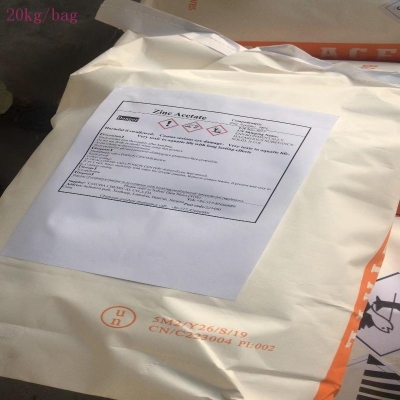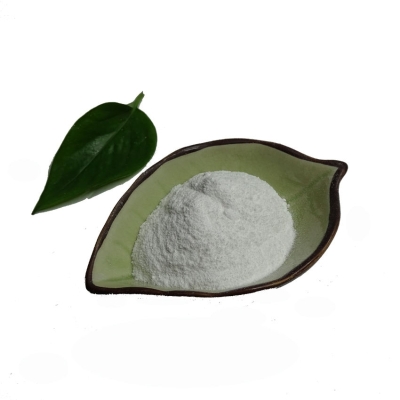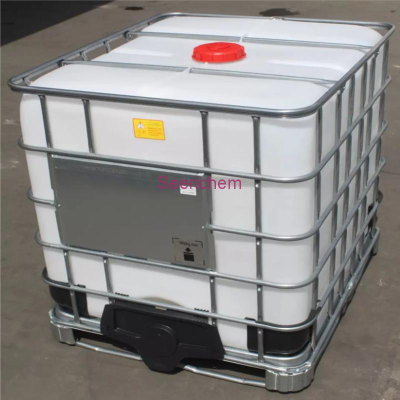-
Categories
-
Pharmaceutical Intermediates
-
Active Pharmaceutical Ingredients
-
Food Additives
- Industrial Coatings
- Agrochemicals
- Dyes and Pigments
- Surfactant
- Flavors and Fragrances
- Chemical Reagents
- Catalyst and Auxiliary
- Natural Products
- Inorganic Chemistry
-
Organic Chemistry
-
Biochemical Engineering
- Analytical Chemistry
-
Cosmetic Ingredient
- Water Treatment Chemical
-
Pharmaceutical Intermediates
Promotion
ECHEMI Mall
Wholesale
Weekly Price
Exhibition
News
-
Trade Service
Due to the combination of various factors such as the collapse of international oil prices, the fall in food prices, the sluggish price of raw materials and the economic downturn, it is very difficult for the urea market to go well.
In 2016, urea will face multiple negative pressures, intensified competition, and the market is not optimistic! The coal chemical production capacity in the northwestern region of the market has been released intensively in the past two years, which has further increased the oversupply of urea.
However, market demand has been sluggish.
In 2015, urea has been sold at "cabbage prices.
" This does not mean that the price has bottomed out, and the price of urea may fall again in 2016.
Cost support is weak.
Guo Wen, manager of Hunan Toyota Agricultural Materials Company, said that more than 70% of my country's urea is made of coal, which is greatly affected by the coal market.
The overall trend of urea prices is basically the same as that of coal prices.
The current price of coal is no longer as good as that of potatoes, and the price of one cubic meter of sand cannot be sold for a ton of coal at the mouth of a pit in many places.
Although the price is so low, the high coal inventory situation has not been alleviated.
The coal inventory has exceeded 300 million tons for 46 consecutive months, mainly due to the rapid expansion of production capacity.
Since 2006, the nation’s coal mining and dressing industry has invested 3.
6 trillion yuan in fixed assets, with coal production and under-construction capacity exceeding 5 billion tons, and at least 300-400 million tons in excess.
In 2016, coal prices will still be hovering at a low level, and urea prices will also struggle to rise.
Demand growth is slow.
The demand for agricultural urea in 2016 is expected to have zero growth, and some areas may experience negative growth.
The main reason is that the country is vigorously advocating soil testing and formula fertilization to reduce unreasonable use of chemical fertilizers.
The fall in prices of agricultural products and the decline in local planting areas will also affect farmers' enthusiasm for fertilizer use.
On August 28, 2015, at the maize structure adjustment and "grain reform and feed" promotion implementation meeting in some provinces in Inner Mongolia, the Ministry of Agriculture proposed to adjust the structure of the deep maize industry.
In 2016, the four northeastern provinces should strive To achieve the goal of reducing the corn area by more than 10 million mu.
In addition, in 2016, my country will also explore the implementation of a pilot cropland rotation and fallow system, which will also reduce part of the planting area.
The new growth point of urea demand lies in industry.
The industrial uses of urea mainly include sheet rubber making, power plant denitration, automobile exhaust gas treatment, etc.
As the country attaches importance to environmental protection, denitrification urea and automotive urea are expected to increase to a certain extent.
Some analysts believe that my country's industrial urea demand will increase by about 1 million tons in 2016, but due to the small proportion of industrial urea, it has little effect on overall demand.
Production capacity continues to increase.
According to Lu Shulin, general manager of Henan Xinlianxin Fertilizer Sales Co.
, Ltd.
, my country’s total urea production capacity was 80.
7 million tons in 2014, accounting for 38 of the world’s total.
8%.
In 2015, the newly added production capacity was 4.
5 million tons, the closed capacity was 3 million tons, and the total production capacity was about 82.
2 million tons.
According to statistics from the chemical fertilizer website, it is estimated that about 4 million tons of new urea production capacity will be put into production in 2016, including 600,000 tons of Shandong Mingshui, 600,000 tons of Shanxi Tianze, and 1.
75 million tons of Inner Mongolia China Coal Tuke.
Due to the large number of new urea production capacity in 2015 and 2016, unless the operating rate of old urea plants drops significantly, urea production in 2016 will still show a positive growth, and it is expected that the annual urea production will exceed 75 million tons.
The export situation is not good.
Chen Li, director of the China Fertilizer Information Center, believes that my country's urea exports will also face challenges in 2016.
In 2016, the fertilizer tariff policy will remain unchanged, and there is no such favorable tariff as in 2015.
At the same time, the international urea production capacity is also increasing, which makes my country's urea export face greater challenges in 2016.
In 2015, the world released 10.
58 million tons of newly built production capacity, and the increase in production capacity was mainly in the regions of major importing countries such as North America and Africa.
New production capacity will still be put into operation in 2016.
For example, Nigeria's new 1.
1 million tons of urea plant is expected to start up in the first quarter of 2016.
In addition, the U.
S.
urea market, the largest importer of urea, may undergo major changes.
Due to the rapid development of shale gas in recent years and the low price, the U.
S.
urea plant is being rebuilt.
The large-scale urea plant in the U.
S.
Gulf area was successfully put into operation on December 16, 2015.
It is estimated that the output will be 2.
2 million-2.
3 million in 2016 Tons of urea, U.
S.
urea imports will decline after 2016, and the U.
S.
may change from an importer of urea to an exporter in the future.
In 2016, urea will face multiple negative pressures, intensified competition, and the market is not optimistic! The coal chemical production capacity in the northwestern region of the market has been released intensively in the past two years, which has further increased the oversupply of urea.
However, market demand has been sluggish.
In 2015, urea has been sold at "cabbage prices.
" This does not mean that the price has bottomed out, and the price of urea may fall again in 2016.
Cost support is weak.
Guo Wen, manager of Hunan Toyota Agricultural Materials Company, said that more than 70% of my country's urea is made of coal, which is greatly affected by the coal market.
The overall trend of urea prices is basically the same as that of coal prices.
The current price of coal is no longer as good as that of potatoes, and the price of one cubic meter of sand cannot be sold for a ton of coal at the mouth of a pit in many places.
Although the price is so low, the high coal inventory situation has not been alleviated.
The coal inventory has exceeded 300 million tons for 46 consecutive months, mainly due to the rapid expansion of production capacity.
Since 2006, the nation’s coal mining and dressing industry has invested 3.
6 trillion yuan in fixed assets, with coal production and under-construction capacity exceeding 5 billion tons, and at least 300-400 million tons in excess.
In 2016, coal prices will still be hovering at a low level, and urea prices will also struggle to rise.
Demand growth is slow.
The demand for agricultural urea in 2016 is expected to have zero growth, and some areas may experience negative growth.
The main reason is that the country is vigorously advocating soil testing and formula fertilization to reduce unreasonable use of chemical fertilizers.
The fall in prices of agricultural products and the decline in local planting areas will also affect farmers' enthusiasm for fertilizer use.
On August 28, 2015, at the maize structure adjustment and "grain reform and feed" promotion implementation meeting in some provinces in Inner Mongolia, the Ministry of Agriculture proposed to adjust the structure of the deep maize industry.
In 2016, the four northeastern provinces should strive To achieve the goal of reducing the corn area by more than 10 million mu.
In addition, in 2016, my country will also explore the implementation of a pilot cropland rotation and fallow system, which will also reduce part of the planting area.
The new growth point of urea demand lies in industry.
The industrial uses of urea mainly include sheet rubber making, power plant denitration, automobile exhaust gas treatment, etc.
As the country attaches importance to environmental protection, denitrification urea and automotive urea are expected to increase to a certain extent.
Some analysts believe that my country's industrial urea demand will increase by about 1 million tons in 2016, but due to the small proportion of industrial urea, it has little effect on overall demand.
Production capacity continues to increase.
According to Lu Shulin, general manager of Henan Xinlianxin Fertilizer Sales Co.
, Ltd.
, my country’s total urea production capacity was 80.
7 million tons in 2014, accounting for 38 of the world’s total.
8%.
In 2015, the newly added production capacity was 4.
5 million tons, the closed capacity was 3 million tons, and the total production capacity was about 82.
2 million tons.
According to statistics from the chemical fertilizer website, it is estimated that about 4 million tons of new urea production capacity will be put into production in 2016, including 600,000 tons of Shandong Mingshui, 600,000 tons of Shanxi Tianze, and 1.
75 million tons of Inner Mongolia China Coal Tuke.
Due to the large number of new urea production capacity in 2015 and 2016, unless the operating rate of old urea plants drops significantly, urea production in 2016 will still show a positive growth, and it is expected that the annual urea production will exceed 75 million tons.
The export situation is not good.
Chen Li, director of the China Fertilizer Information Center, believes that my country's urea exports will also face challenges in 2016.
In 2016, the fertilizer tariff policy will remain unchanged, and there is no such favorable tariff as in 2015.
At the same time, the international urea production capacity is also increasing, which makes my country's urea export face greater challenges in 2016.
In 2015, the world released 10.
58 million tons of newly built production capacity, and the increase in production capacity was mainly in the regions of major importing countries such as North America and Africa.
New production capacity will still be put into operation in 2016.
For example, Nigeria's new 1.
1 million tons of urea plant is expected to start up in the first quarter of 2016.
In addition, the U.
S.
urea market, the largest importer of urea, may undergo major changes.
Due to the rapid development of shale gas in recent years and the low price, the U.
S.
urea plant is being rebuilt.
The large-scale urea plant in the U.
S.
Gulf area was successfully put into operation on December 16, 2015.
It is estimated that the output will be 2.
2 million-2.
3 million in 2016 Tons of urea, U.
S.
urea imports will decline after 2016, and the U.
S.
may change from an importer of urea to an exporter in the future.







